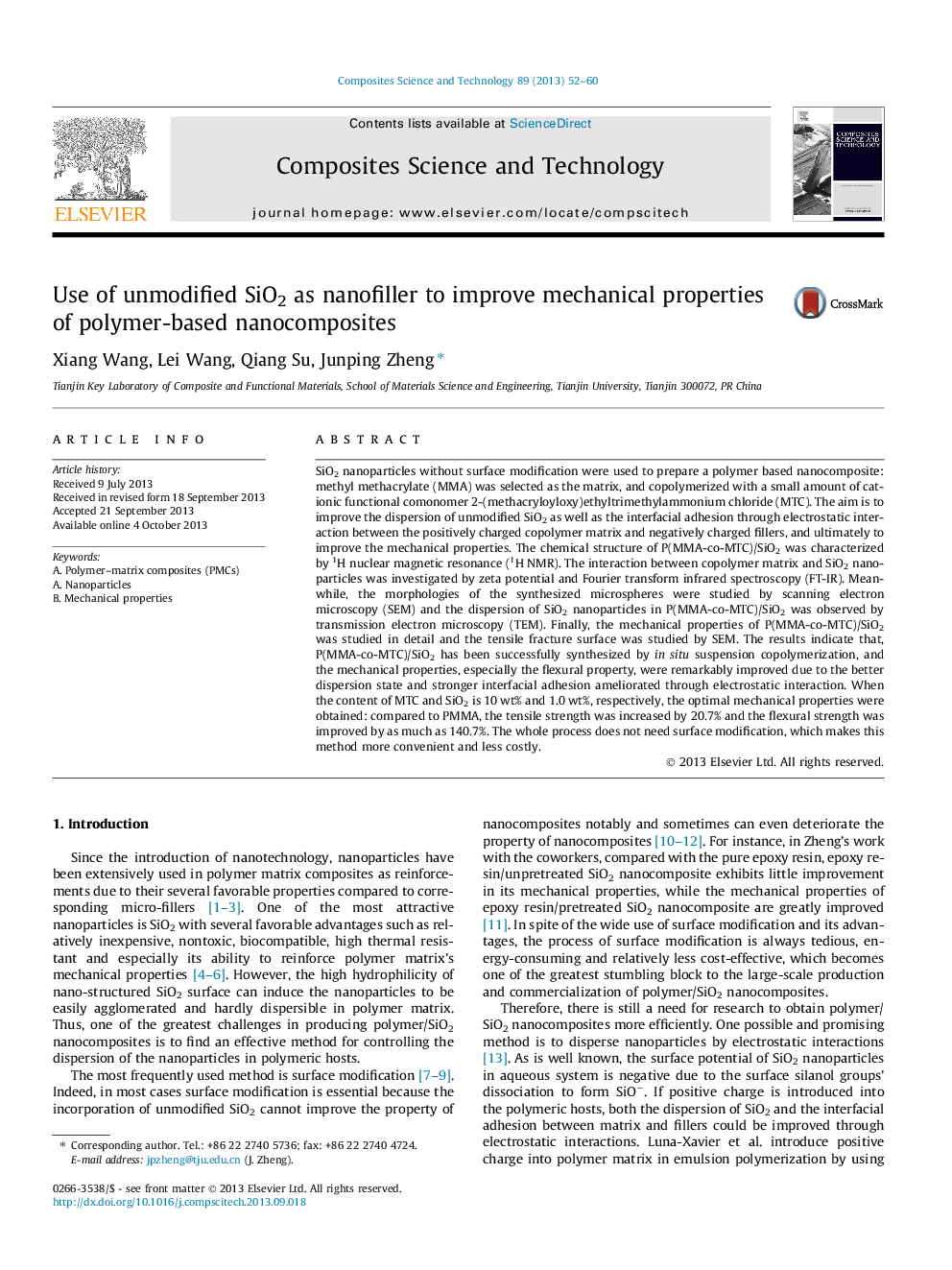| کد مقاله | کد نشریه | سال انتشار | مقاله انگلیسی | نسخه تمام متن |
|---|---|---|---|---|
| 820437 | 1469536 | 2013 | 9 صفحه PDF | دانلود رایگان |

SiO2 nanoparticles without surface modification were used to prepare a polymer based nanocomposite: methyl methacrylate (MMA) was selected as the matrix, and copolymerized with a small amount of cationic functional comonomer 2-(methacryloyloxy)ethyltrimethylammonium chloride (MTC). The aim is to improve the dispersion of unmodified SiO2 as well as the interfacial adhesion through electrostatic interaction between the positively charged copolymer matrix and negatively charged fillers, and ultimately to improve the mechanical properties. The chemical structure of P(MMA-co-MTC)/SiO2 was characterized by 1H nuclear magnetic resonance (1H NMR). The interaction between copolymer matrix and SiO2 nanoparticles was investigated by zeta potential and Fourier transform infrared spectroscopy (FT-IR). Meanwhile, the morphologies of the synthesized microspheres were studied by scanning electron microscopy (SEM) and the dispersion of SiO2 nanoparticles in P(MMA-co-MTC)/SiO2 was observed by transmission electron microscopy (TEM). Finally, the mechanical properties of P(MMA-co-MTC)/SiO2 was studied in detail and the tensile fracture surface was studied by SEM. The results indicate that, P(MMA-co-MTC)/SiO2 has been successfully synthesized by in situ suspension copolymerization, and the mechanical properties, especially the flexural property, were remarkably improved due to the better dispersion state and stronger interfacial adhesion ameliorated through electrostatic interaction. When the content of MTC and SiO2 is 10 wt% and 1.0 wt%, respectively, the optimal mechanical properties were obtained: compared to PMMA, the tensile strength was increased by 20.7% and the flexural strength was improved by as much as 140.7%. The whole process does not need surface modification, which makes this method more convenient and less costly.
Journal: Composites Science and Technology - Volume 89, 13 December 2013, Pages 52–60